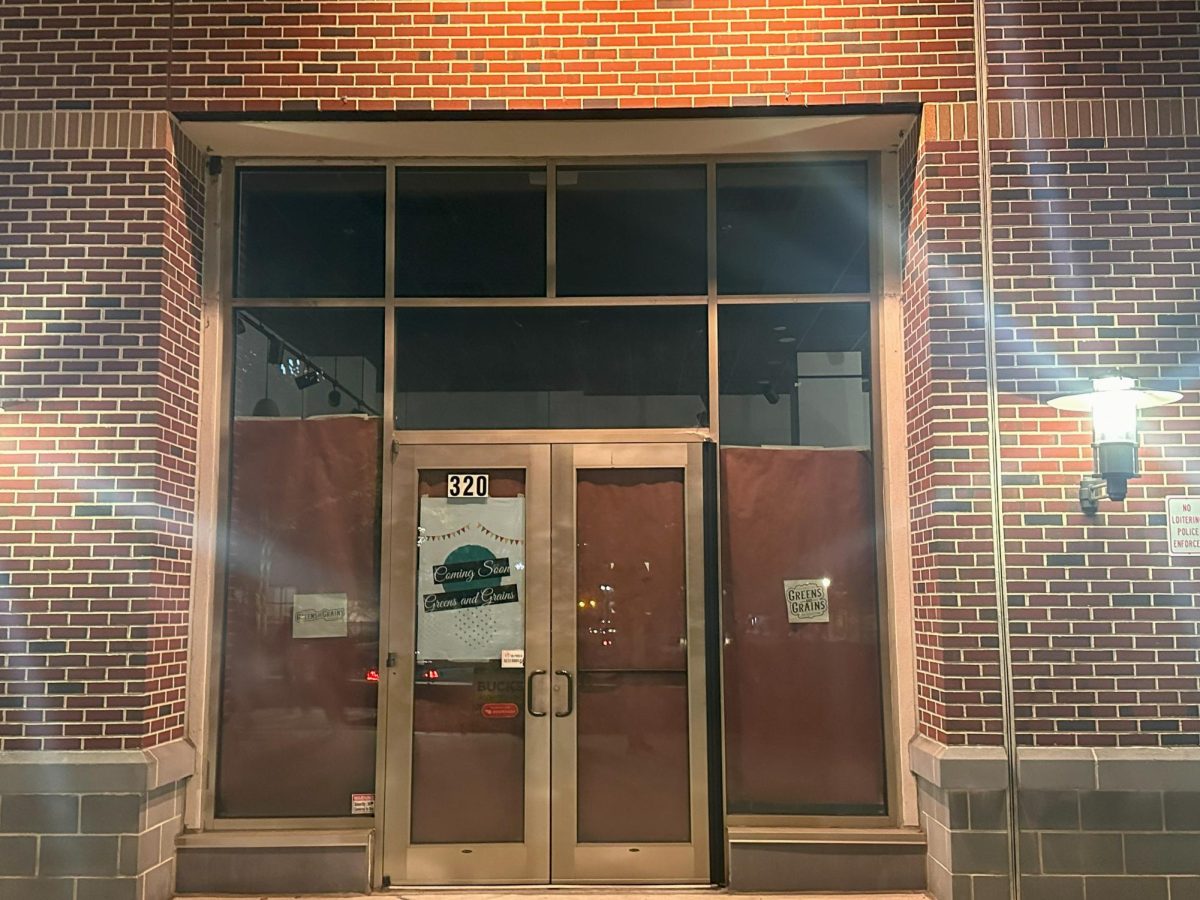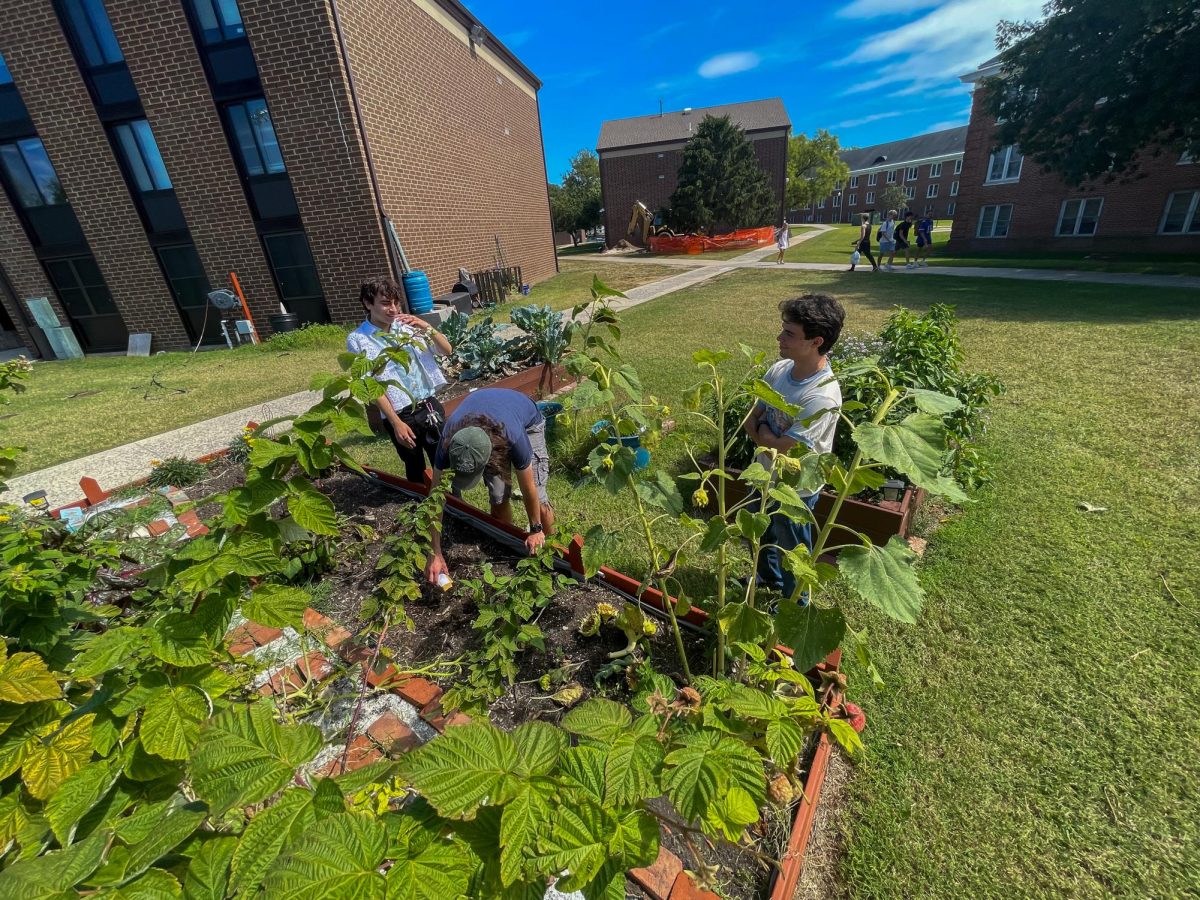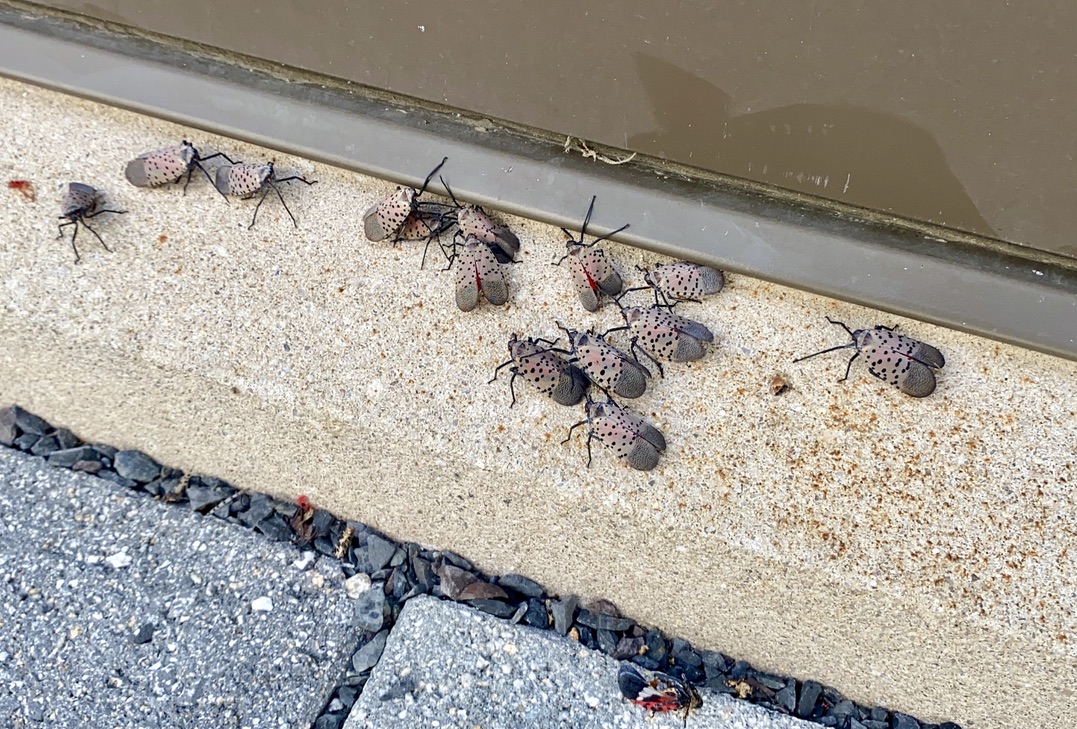I’m sure you’ve seen them– scattered on the sidewalk, flying in the air, and maybe even landing on you– the Spotted Lanternfly.
The Spotted Lanternfly is an invasive insect species, spreading uncontrollably throughout the East Coast that is harmful to agriculture and plants.
According to Gianna Trotte, a senior biological sciences major at Rowan, the first confirmed infestation in the United States was in Sept. 2014, in Berks County, Pennsylvania.
“It’s believed that the bugs were brought as egg masses on shipments of stone from China in 2012,” Trotte said.
These bugs invaded the United States, but they’re native to China, India, and Vietnam according to Trotte.
Dr. Daniel Duran, assistant professor and naturalist, notes that it’s extremely easy for the Spotted Lanternfly to spread rapidly.
“Because they’re an introduced species they have no predators, they have no natural enemies here, so they can spread incredibly quickly because nothing can eat them,” Duran said.
The Spotted Lanternfly’s egg masses are quite large and inhabit lots of eggs, making it even easier for the insects to spread at such a fast pace.
This insect proposes zero direct threat to people; it doesn’t bite, sting, or transmit disease. However, the Spotted Lanternfly is extremely detrimental to agriculture, the environment, and certain food production.
“These bugs tend to feed on the sap of important plants that humans eat to sustain life such as grapes, maple trees, agricultural crops and other plant species. The reason why this is such a big deal is when there is a high population of spotted lanternflies in one area they tend to feed on these plants and cause a significant amount of damage to them,” said Joanna Janowski, a senior environmental and sustainability studies and business major at Rowan.
According to Trotte, the Spotted Lanternfly feeds on the plants by piercing through the surface and sucking out important nutrients that the plant needs to grow. This process can eventually kill the tree or plant.
“They also excrete large amounts of a clear sticky material known as honeydew, this material can coat the tree or anything underneath it, and wherever it’s deposited will grow a black sooty mold,” Trotte said, “This mold is unharmful to the tree, but it’s been recorded to kill plants on the ground underneath.”
According to Dr. Duran, the Spotted Lanternfly also feeds on stone fruit trees, such as peach and plum trees.
“The Spotted Lanternfly in particular feeds on over 70 different plants,” said Jennifer Mora, a 24-year-old entomologist.
So, what now? What do you do when you come across one of these pretty, yet pesty insects on your walk to class?
To be frank, the best way to currently take care of this invasive species problem is to simply kill it.
“If you see a Spotted Lanternfly, please kill them. It is important to make sure you check your cars and belongings when traveling to make sure you don’t have any hitch hiking on you or your belongings,” Mora said. “Spotted Lanternflys can jump really high and fast so if you are going to try to kill them, make sure you’re fast.”
Trotte recommends reporting the sighting to the NJ Department of Agriculture, to help them accurately track the spread of the bug.
“Reporting the insects helps the authorities track where the bugs are concentrating, and prioritize places where we should be fighting the bugs first,” Trotte said.
Dr. Duran believes that destroying the insects’ egg masses will have a much greater impact, rather than killing the adult bugs one-by-one.
“Each egg mass can produce many, many Spotted Lanternflies. In the winter, they look like wet spackle on the bark of a tree, if you see it, and there’s lots of good pictures online, that’s when you want to scrape it off, put it in some rubbing alcohol, and then throw it away,” Dr. Duran said. “That’s the best you can do.”
According to Mora, the possible reason for so many Spotted Lanternflies in Gloucester County could be because of the type of plants that grow in the area.
“There must be a great deal of wild host plants there [Gloucester County] that they can feed on, especially the Tree of Heaven,” Mora said.
While the public does their part in getting rid of the Spotted Lanternfly, scientists and environmentalists are hard at work to find a long-term solution.
According to Dr. Duran, biocontrol is being considered as the best option to battle the insect.
“Sometime in the next 10 years it’s likely that scientists will figure out predators or parasites that can be introduced safely from other parts of the world that will eat them, [the Spotted Lanternfly] but won’t eat any native insects,” Duran said.
The goal is to come up with an insect, bacteria, parasite, etc. that will specifically prey on the Spotted Lanternfly and no other species. Dr. Duran notes that it could take up to a decade to come up with a predator like this.
According to Trotte, researchers at Cornell University have started to see results in a naturally occurring fungi in soil that will kill the insect.
“There’s currently limited knowledge about the fungi, but researchers are investigating the possibility of creating a pesticide with them, as a more environmentally safe way to control these bugs,” Trotte said.
Although the adult insect will temporarily die off when the cold weather starts, their eggs can survive the cold, which is why it’s imperative that the egg masses are destroyed.
For now, join the fight and continue to step on the Spotted Lanternfly when spotted, and report the sighting by emailing [email protected].
For comments/questions about this story tweet @TheWhitOnline.























































































































































!["Working with [Dr. Lynch] is always a learning experience for me. She is a treasure,” said Thomas. - Staff Writer / Kacie Scibilia](https://thewhitonline.com/wp-content/uploads/2025/04/choir-1-1200x694.jpg)













































